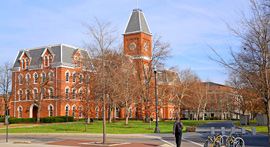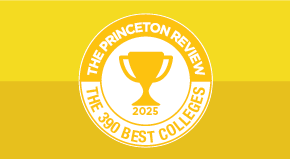
Art is an essential part of the human experience. It enables us to communicate with one another, express ourselves, and get new perspectives on the world. Arts education can help high school students develop their creativity, critical thinking skills, and problem-solving abilities. It can also help build self-confidence and resilience.
What is arts education?
Arts education is a broad term that encompasses all of the different ways that students can learn about and engage with the arts. This can include classes in painting, drawing, sculpture, music, dance, theater, and more. Arts education can also be more informal, such as taking part in an art club or attending a museum or concert.
Why is arts education important for high school students?
For high school students, arts education is crucial for a variety of reasons. Here are a few examples:
-
Creativity: By allowing students to express themselves in a variety of ways, arts education can aid in students’ creative growth by generating fresh ideas and problem-solving techniques.
-
Critical thinking: Analyzing and interpreting different works of art can help students better understand the world around them and make informed decisions.
-
Problem-solving: As students develop skills to come up with solutions to creative challenges, they can better deal with challenges in their everyday lives.
-
Self-confidence: Arts education can help students to develop self-confidence by giving them the opportunity to succeed in a challenging environment. This can help them believe in themselves and their abilities.
-
Resilience: Teaching students how to cope with failure and disappointment can help them bounce back from setbacks and persevere in the face of challenges.
-
Growth mindset: This is the belief that you can learn and improve with effort. Arts education can help students develop a growth mindset by providing them with opportunities to challenge themselves and learn new things.
-
Well-rounded individuals: Many students can explore and discover their interests and talents outside of the classroom. This can make them more well-rounded individuals and give them a competitive edge in college and the workforce.
Concrete Benefits for Students
Arts education can benefit high school students in many ways. Here are just a few examples:
-
A student who is struggling in math may be able to better understand the concepts by creating a visual representation of them.
-
A student who is shy may be able to come out of their shell by participating in a drama class.
-
A student who is struggling with their self-esteem may be able to boost their confidence by learning to play an instrument or by participating in a dance class.
-
A student who is interested in pursuing a career in the arts may be able to get the training and experience they need through arts education.
-
A student who is interested in a particular field, such as science or business, may be able to use the skills they learn in arts education to better understand that field.
-
A student who is simply looking for a way to express themselves creatively may find that arts education provides them with the outlet they need.
The Benefits of Arts Education for the Individual
In addition to the benefits that arts education can have for students' academic performance, there are also many personal benefits that students can gain from participating in the arts. These benefits include:
-
Increased self-esteem: Arts education can help students develop a positive sense of self-worth by giving them opportunities to express themselves creatively and to achieve success.
-
Improved social skills: Arts education can help students develop their social skills by requiring them to work together with others and to communicate effectively.
-
Reduced stress and anxiety: Arts education can help students reduce stress and anxiety by providing them with a creative outlet and by helping them to relax and de-stress.
-
Improved mental health: Arts education can help improve students' mental health by providing them with a sense of purpose and belonging.
-
Increased happiness: Arts education can help increase students' happiness by giving them a sense of joy and satisfaction.
The Benefits of Arts Education for Society
The benefits of arts education extend beyond the individual student. Arts education can also benefit society as a whole. These benefits include:
-
A more creative and innovative society: Arts education can spark creativity and enrich the community by encouraging people to think outside the box.
-
A more tolerant and understanding society: Arts education can help create a more tolerant and understanding society by exposing people to different cultures and perspectives.
-
A more civic-minded society: Arts education can help create a more civic-minded society by teaching people about the importance of civic engagement.
-
A more economically vibrant society: Arts education can help create a more economically vibrant society by producing skilled workers and by attracting businesses and tourists.
The Importance of Arts Education in High School and Future Planning
Arts education is especially important in high school, when students are making important decisions about their future. Arts education can help students explore their interests and talents, and it can also help them develop the skills they need to succeed in college and the workforce.
How to Get Involved in Arts Education
There are many ways to get involved in arts education. You can take classes at your school, join an arts club, or attend a museum or concert. You can also volunteer your time at an arts organization.
The Future of Arts Education
The future of arts education is bright. There is growing recognition of the value of arts education, and there is a movement to make arts education more accessible to all students. There have been efforts to promote additional funding for arts education as well as advocacy to provide more support for the proliferation of the field.
Arts education is an essential part of a balanced education. It can help students develop their creativity, critical thinking skills, and problem-solving abilities in order to make them well-rounded individuals and prepare them for a bright future ahead. If you are a high school student, it would be wise to get involved in arts education, an investment in your personal growth and future.
Sources:
Explore Colleges For You
Connect with our featured colleges to find schools that both match your interests and are looking for students like you.
Get Started on Athletic Scholarships & Recruiting!
Join athletes who were discovered, recruited & often received scholarships after connecting with NCSA's 42,000 strong network of coaches.
Best 390 Colleges
168,000 students rate everything from their professors to their campus social scene.
Explore Colleges For You
Connect with our featured colleges to find schools that both match your interests and are looking for students like you.
Get Started on Athletic Scholarships & Recruiting!
Join athletes who were discovered, recruited & often received scholarships after connecting with NCSA's 42,000 strong network of coaches.
Best 390 Colleges
168,000 students rate everything from their professors to their campus social scene.
Explore Colleges For You
Connect with our featured colleges to find schools that both match your interests and are looking for students like you.
Get Started on Athletic Scholarships & Recruiting!
Join athletes who were discovered, recruited & often received scholarships after connecting with NCSA's 42,000 strong network of coaches.
Best 390 Colleges
168,000 students rate everything from their professors to their campus social scene.



